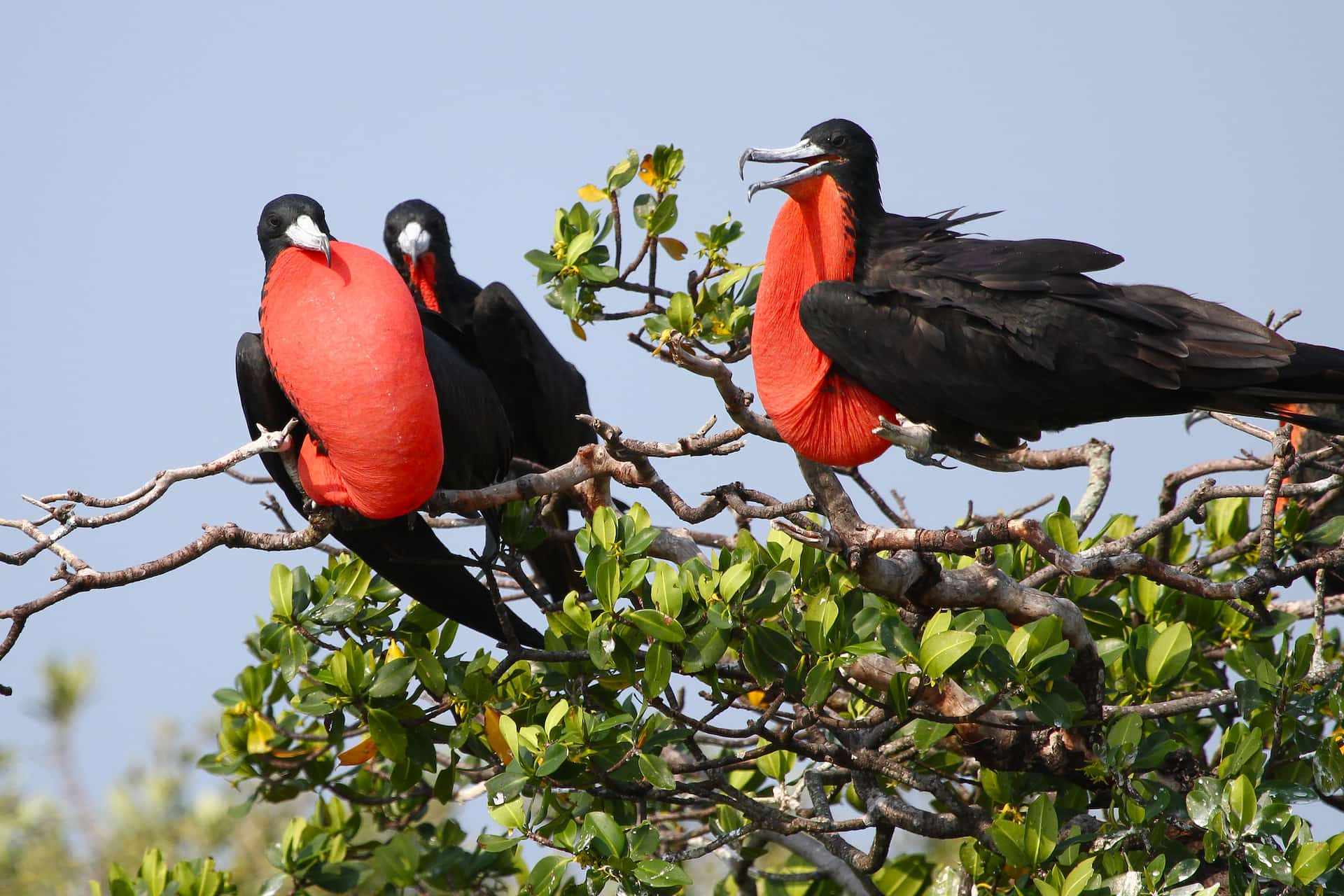Meet the Magnificent Frigatebird
These seabirds are the real pirates of the Caribbean

Move over, Jack Sparrow: Not all pirates are humans after all. Enter frigatebirds (Fregatidae), a family of seabirds comprised of five unique species. While all five of these seabirds are captivating in their own right, one species has earned itself quite the reputation: the Magnificent frigatebird (Fregata magnificens). Let’s dive in and learn about the curious case of the “pirate birds” of the ocean.
Commonly found in tropical areas like the Caribbean, Magnificent frigatebirds boast many features that set the species apart from other seabirds. While they typically weigh no more than 5.5 pounds as adults, their wingspan can grow to a staggering seven feet in length. This gives them the distinction of having the largest wingspan/body-weight ratio of not just any seabird but of any bird on Earth.
Get Ocean Updates in Your Inbox
Sign up with your email and never miss an update.
Another curious feature that makes these birds unique is that, unlike most seabirds, they must (ironically) avoid the water as much as possible. While most seabirds have “waterproofing” on their wings, thanks to a substance called preen oil produced by specialized glands, frigatebirds lack this feature. If their wings are wet for more than a couple of minutes, they become waterlogged and too heavy for flight.
Frigatebirds, however, have adapted to this inconvenience in several ways. First, to avoid water, they can remain airborne for up to a month without needing to touch land. Their forked tails make their bodies incredibly aerodynamic, and they even can sleep (well, nap) while flying. They do so by utilizing only half their brain at a time and sleeping for short 10-second bursts while strategically riding on rising air currents. Though this sleep may not be as restful as the 12 or so hours a day they get while on land, it’s sufficient for them to remain suspended in the air until they can make it to land or find their next meal to sustain their energy.
Magnificent frigatebirds get their name from their hunting strategy, which could more aptly be called their “piracy strategy.” While many seabirds hunt by diving into the water to snap up fish or foraging through tidepools to find crabs or urchins, the Magnificent frigatebird has to be a bit more creative, thanks to that annoying lack of waterproofing. The species very often resorts to what’s been called “kleptoparasitic” behavior, in which they’ll chase other birds down, grab them by their tails and shake them until they regurgitate recently consumed food, which the Magnificents then consume before it hits the water. Hey, piracy has never been pretty, right? This display of stealing food is so common that young frigatebirds have been known to imitate the behavior that they see in adults—juveniles are often seen chasing each other with sticks in their mouths, practicing knocking resources away from other birds.
While this behavior of Magnificent frigatebirds is certainly not the most charming, the courting and childrearing habits of the species might make up for it. First, the mate-selection process for these animals is an absolute spectacle to behold. When breeding, multiple males will approach a female, inflating their trademark bright red throat pouches. When a male’s bill vibrates against its pouch, a sharp drumming sound is made, accompanied by vocalized shrieks to impress the female. They’ll also engage in acrobatic twists and turns in the air, doing everything in their power to earn the female’s attention.
Once a female has selected her mate, the pair will bond for about three to five days. After mating, both parents take turns incubating a single egg. During their alternating incubating sessions, males will collect sticks and twigs while off duty, and females will assemble the collected items into a nest. Once a baby frigatebird hatches, fathers will keep watch over the hatchling for up to 90 days, and females will then care for the juvenile bird until it matures over the next nine months. Nests must never be left alone, as other frigatebirds are known to prey upon vulnerable eggs and hatchlings. Incredibly, this year-long childrearing process distinguishes Magnificent frigatebirds as having the longest duration of offspring care known to date in the bird world.
While Magnificent frigatebirds may have an alarmingly pirate-like side to them thanks to their hunting behaviors, there’s no doubt that all in all, these seabirds live up to their name and demonstrate the wonder of adaptation and the resilience of species designed for exactly the environments they thrive in.
Help protect wildlife like frigatebirds, the ecosystems they depend on and the ocean we all hold so dear. Take action with Ocean Conservancy’s Action Center today.